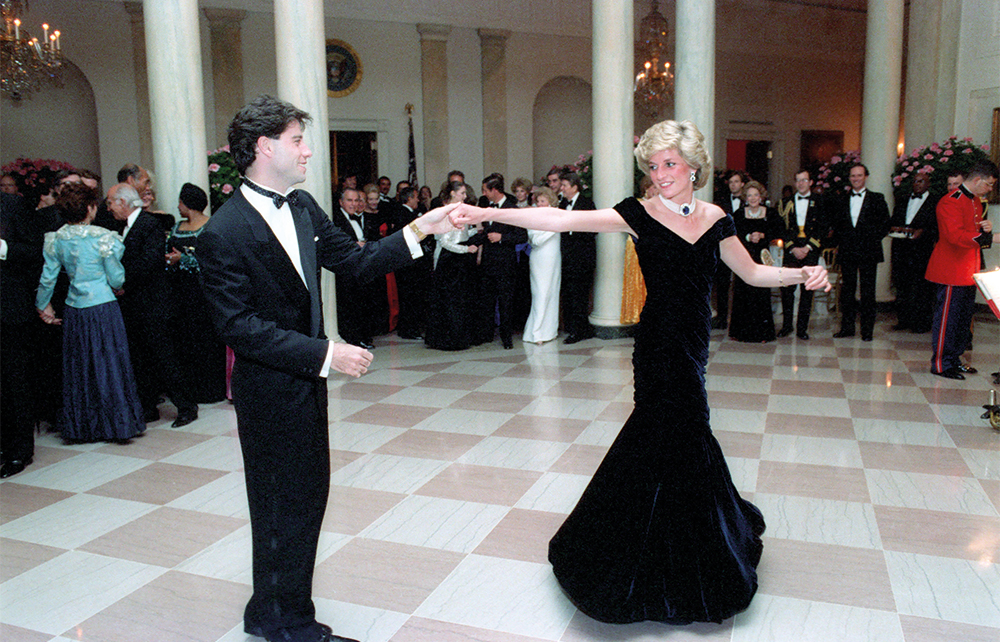There is something undeniably sweet about this book. On one level, in line with the cover’s pretty pink text, it is a simple, unpretentious story about a girl who loved to dance. But on another level, the unfolding tragedy is Shakespearian – an effect amplified by the unfussy prose of Anne Allan, a long-time professional dancer and choreographer.
Years after everyone else cashed in their Diana chips, the Scottish-born author has finally decided to tell her story. The book opens in 1981. Allan is a dancer and ballet mistress with the London City Ballet, and the performance is Swan Lake; but the drama happens offstage when she receives a call from Anne Beckwith-Smith, lady-in-waiting to Diana, Princess of Wales. Prince Charles’s stratospherically famous new bride has requested ballet lessons.
Schedules permitting, Allan indulged the young princess’s love of dance in one-to-one sessions on a weekly basis. The lessons were secret, and their effect transformative. Diana’s ‘head continued to look at the floor. I gently noted that the head was the heaviest part of the body… I wanted her to feel the freedom that dance can give, and she did.’ The pupil ended the first lesson by giving her teacher a small posy. Many cherished handwritten notes would follow, and it was the beginning of an important relationship. The princess’s metamorphosis from Shy Di to Britain’s most glamorous asset began there, on the sprung floor of a Hammersmith dance studio in a simple leotard.
The classes spanned nearly a decade, ending only when Allan emigrated to Canada in 1989 after her marriage fell part. For eight precious years she was privy to Britain’s most famous ‘fairy story’. What is striking is the lack of control Diana had over her own life – trapped like a fly in a web, detectives bookending her lessons, her every move pinned down to tight, preordained schedules, and the presence of the palace never far away. When we first meet her, ‘blushing apologetically’, she is in love and desperately keen to please. Dancing with Diana is an uncomfortable reminder of how convenient a biddable, isolated princess was for the royal machine in those early days. Allan slowly boosts her confidence.
From the outset, there are tiny cracks. A much anticipated trip to Australia sees Diana assert herself for the first time: she will not travel without baby William. Allan watches the drama unfold on screen. Diana returns to her for more dancing and talk, admitting that the attention she got on tour seemed to ‘bother Charles’. How can she impress her elusive prince?
The first high point is Diana’s duet with Wayne Sleep at the Royal Opera House, a fitting prelude to her other great dance-off, with John Travolta. The build-up to her surprise performance at Covent Garden is riveting. Diana takes the lead: it is all her idea to celebrate the prince’s 37th birthday, including the music – Billy Joel’s ‘Uptown Girl’. She confesses that Charles prefers opera and ‘sometimes I find his friends all a bit stuffy’. Just wait until he sees his wife dance…
Her gumption, the adrenaline, the sheer joy of escaping the Royal Box and doing her own thing is palpable. ‘As she came off from the final bow, Diana said to both of us: “Beats the wedding!’’ ’ But not everyone agreed:
She made her way to Charles, and as she stood before him, I could sense she desperately wanted his approval. He said ‘Well done, darling’, and turned to talk to someone else.
Allan’s prose is careful, respectful even, but she can’t hide her loyalties.
Diana’s relationship with Allan and Sleep deepens. There is a private lunch and an official event at which Sleep is considered to have overstepped the mark. Was he talking too loudly? Hogging Diana? It is not clear: men in suits and ladies-in-waiting are discreet. They even try to stand Allan down. The princess is having none of it; by now the dance teacher has become her confidante. As much time is spent in tears on the floor over the parlous state of Diana’s marriage as it is in improving her dance moves. Allan listens and consoles, and Diana responds with notes and hugs: ‘Words are inadequate to what I feel, but you know how deeply I appreciate your advice.’
Today the King, happily married to Queen Camilla, is up against it with cancer. Most people have preferred to forgive and forget his early misdemeanours. After all, broken marriages are two a penny now. But close friendship doesn’t work like that. When Charles and Camilla visited Canada in 2014, Allan, by then artistic director at Toronto’s Confederation Centre of the Arts, found an excuse to avoid the royals’ receiving line – a gesture I feel sure Diana would have appreciated.







Comments